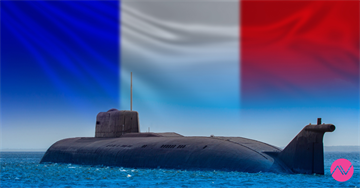
Unraveling the Offshore Wind Turbine Market
Markets love conceptual simplicity. How can an offshore turbine ever be a complex piece of kit? It is a mast with ever bigger wings and Aeolus at sea will see to the supply of a steady wind-stream that will facilitate … a highly geared bet on the cost of capital, on tax benefits and on technologies working at nameplate capacity. The facially simple asset story is actually dominated by the complexity of the liability side of the equation.
On Monday, we discussed Orsted and its offshore wind debacle.
As it happens, life at sea never matches expectations. So that bigger windmills will be both late, below capacity over their working lives and hugely expensive to maintain, adding to the financial pain.
The industry food chain has tried to make believe that erecting Eiffel Tower sized wind turbines in vast numbers could be easy … because money was easy. Why not push the envelope that extra inch as the stretched product/project/power transmission kit will sell anyway to buyers with an excess cash issue. The result is known: turbine suppliers have been stung by their own excessive optimism, tipping the economic balance in the wrong direction for all participants. Siemens Energy has been paying a steep price for such hubris.
The trigger, oddly, was not the actual failure of giant wind turbines (that has yet to come, keep an eye on the Chinese ego-driven developments), but of financial planning which missed the inflation factor up to the point where respectable wind farm operators laid down their tools, recognising that IRRs were shifting into the red.
Offshore wind is a usual case of excess money finding a use rationalised ex post. The economic model beyond the technology risk is utterly wrong because it relies on massive leverage and massive tax incentives accelerated by the US IRA. And everyone feels good because it is green and thus serves a mission. Offshore wind cannot fly on its own wings and may not fly before long as the technology is now accepted as too immature. By way of an analogy, nobody would buy into a Ryanair selling ever cheaper tickets on a hoped-for cost cut derived from the untested next generation of thriftier aircraft. This is what has been happening with wind farm promises: a project that does not fly with a 5MW turbine would be profitable with the next generation beast. It amounts to betting the house on a promise.
Go for plain power cables instead
It cannot be stressed enough that power at sea is a double transport/transmission problem. Not only the massive generation needs to reach the continent but also its load variations have to be digested by the grid, not to mention that power is produced where it is not needed, adding to transport capacity issues.
The answer, ACDC conversion at high voltages, is a tricky business that requires technologies that few groups master, as well as rather special undersea cables. The heavy-duty side relies on High Voltage Direct Current which helps avoid the requirement to be in sync with AC networks. The ACDC conversion relies on IGBT technologies (insulated gate bipolar transistor) largely used for interconnectors between grids beating on slightly different clocks. There are very few players (leaders on HVDC are Hitachi Energy (ex ABB), Siemens, GE Power (ex Alstom), Mitsubishi Electric). For heavy-duty undersea cables, Prysmian and Nexans will do the job with a wide smile.
Remember that, in Europe, electricity trends toward 70% of the energy mix imply a 60% rise in demand by 2030. No network can absorb that surge. The EC energy commissioner sees a case for near €600bn of grid capex by 2030. At a planet level, the annual capex required may well be above €300bn a year.
Green bets should not be on windmills and offshore wind farms but with corporates able to upgrade networks. It is indeed less of a simple concept.
On Monday, we discussed Orsted and its offshore wind debacle.
As it happens, life at sea never matches expectations. So that bigger windmills will be both late, below capacity over their working lives and hugely expensive to maintain, adding to the financial pain.
The industry food chain has tried to make believe that erecting Eiffel Tower sized wind turbines in vast numbers could be easy … because money was easy. Why not push the envelope that extra inch as the stretched product/project/power transmission kit will sell anyway to buyers with an excess cash issue. The result is known: turbine suppliers have been stung by their own excessive optimism, tipping the economic balance in the wrong direction for all participants. Siemens Energy has been paying a steep price for such hubris.
The trigger, oddly, was not the actual failure of giant wind turbines (that has yet to come, keep an eye on the Chinese ego-driven developments), but of financial planning which missed the inflation factor up to the point where respectable wind farm operators laid down their tools, recognising that IRRs were shifting into the red.
Offshore wind is a usual case of excess money finding a use rationalised ex post. The economic model beyond the technology risk is utterly wrong because it relies on massive leverage and massive tax incentives accelerated by the US IRA. And everyone feels good because it is green and thus serves a mission. Offshore wind cannot fly on its own wings and may not fly before long as the technology is now accepted as too immature. By way of an analogy, nobody would buy into a Ryanair selling ever cheaper tickets on a hoped-for cost cut derived from the untested next generation of thriftier aircraft. This is what has been happening with wind farm promises: a project that does not fly with a 5MW turbine would be profitable with the next generation beast. It amounts to betting the house on a promise.
Go for plain power cables instead
It cannot be stressed enough that power at sea is a double transport/transmission problem. Not only the massive generation needs to reach the continent but also its load variations have to be digested by the grid, not to mention that power is produced where it is not needed, adding to transport capacity issues.
The answer, ACDC conversion at high voltages, is a tricky business that requires technologies that few groups master, as well as rather special undersea cables. The heavy-duty side relies on High Voltage Direct Current which helps avoid the requirement to be in sync with AC networks. The ACDC conversion relies on IGBT technologies (insulated gate bipolar transistor) largely used for interconnectors between grids beating on slightly different clocks. There are very few players (leaders on HVDC are Hitachi Energy (ex ABB), Siemens, GE Power (ex Alstom), Mitsubishi Electric). For heavy-duty undersea cables, Prysmian and Nexans will do the job with a wide smile.
Remember that, in Europe, electricity trends toward 70% of the energy mix imply a 60% rise in demand by 2030. No network can absorb that surge. The EC energy commissioner sees a case for near €600bn of grid capex by 2030. At a planet level, the annual capex required may well be above €300bn a year.
Green bets should not be on windmills and offshore wind farms but with corporates able to upgrade networks. It is indeed less of a simple concept.
Subscribe to our blog

Green splurge keeping BP in the slow lane

A deep dive into French state listed assets worth c.€78bn

From losing ~6% in a single day to outperforming a weak sector, know why the stock is still worth a ...